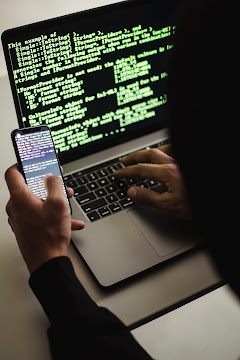Linux Command For Beginner|Shadow Cyber Security
Linux is kernel of operating system's.Linux is a clone. Linux is open source, and free, that means that you can very simple change anything in a Linux and redistribute it in your own name, Linux several's Distribution,commonly called "distros".
1.IS - With the help of 'Is' you can see all the hidden files. Use the Is command to know what files are in the directory .
2.Pwd- It fives us the absolute path, which means the path thats starts from root.When you first open the terminal , you are in home directory of your user.The root is the base of Linux file system.The user directory is usually something like,home,username.It is denoted by a forword slash(/).
3.mkdir & rmdir- Use the mkdir ou need command when you need to create a folder or a directory.If you want to make a directory called "DIY".Remember , as told before ,if you want to create a directory named "DIY HACKING".You can type "mkdir Diy\hacking".To delete a directory containing files,use rm. With the help of rmdir you can delete a directory.But rmdir can only be used to delete an empty directory.
4.cd- This command is case sensitive, and you have to type in the name of the folder exactly as it is, but there is a problem with this commands,Imagine you have a folder named "Respberry pi", In this case, when you type in "cd Respberry pi".The sell will take the second argument of the command as a different one, you will get an error saying the the directory does not exist .Use the cd command to go to a directory.
6.touch- The touch command is used to create a file.That is anything, from an exampt txt file to an empty zip file,for example
"touch new.txt".
7.cp- Use the cp command to copy files through the command line.It is two argument takes , first is the location of the file to be copied,the second is where to copy.
8.man&--help- It shows the manual pages of the command.If you know more about a command and how to use it,use the man commend.For example ,"man cd shows the manual pages of the command.Typing in the command name,the argument helps it show which ways the command can be used (e.g.,cd-help).
9.mv- Use the mv command to move files through the command a line.Also use the mv command to rename a file .For example , If "text" to "new",also use the mv "text new". It takes the two argument, just like the cp command.
10.locate- This command is useful when you don't know where a file is saved or the actual name of the file .The locate command is use to locate a file in a Linux system,like a search command in the windows.Using the,i argument with the command helps to ignore the case (it does't matter if it is uppercase or lowercase)..If you want the file that has the word "hello",it gives the list of all the files in your Linux system containing the word "hello"when type in "locate-i hello".If you remember two words , you can seprate them using an asterisk (*).
TIPS AND TRICKS FOR USING LINUX COMMAND LINE
- You can use the clear command to clear the terminal if it is gets filled up with too many commands.
- Ctrl+C can be used to stop any command in terminal safely.If it does't stop with that, then Ctrl+Z can be used to force stop it.
-TAB can be used to fill up in terminal.For example,You just need to type "cd Doc" and then TAB and the terminal fills the rest up and makes it "cd document"
-You can exit from the terminal by using the exit command.
-You can power off or reboot the computer by using the command sudo halt and sudo reboot.
=shadow cyber security
YGFGFGGFDD--



Post a Comment
Post a Comment